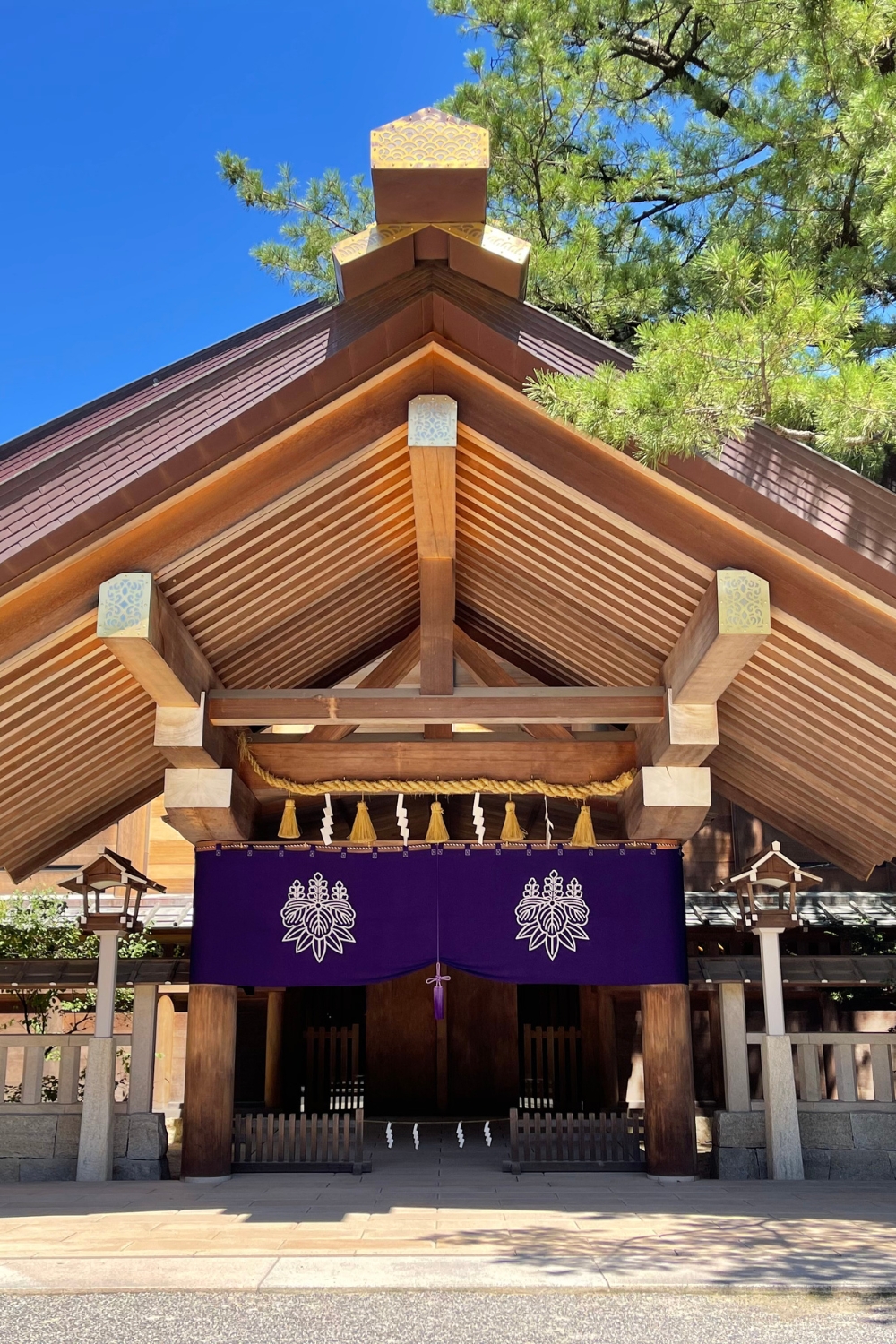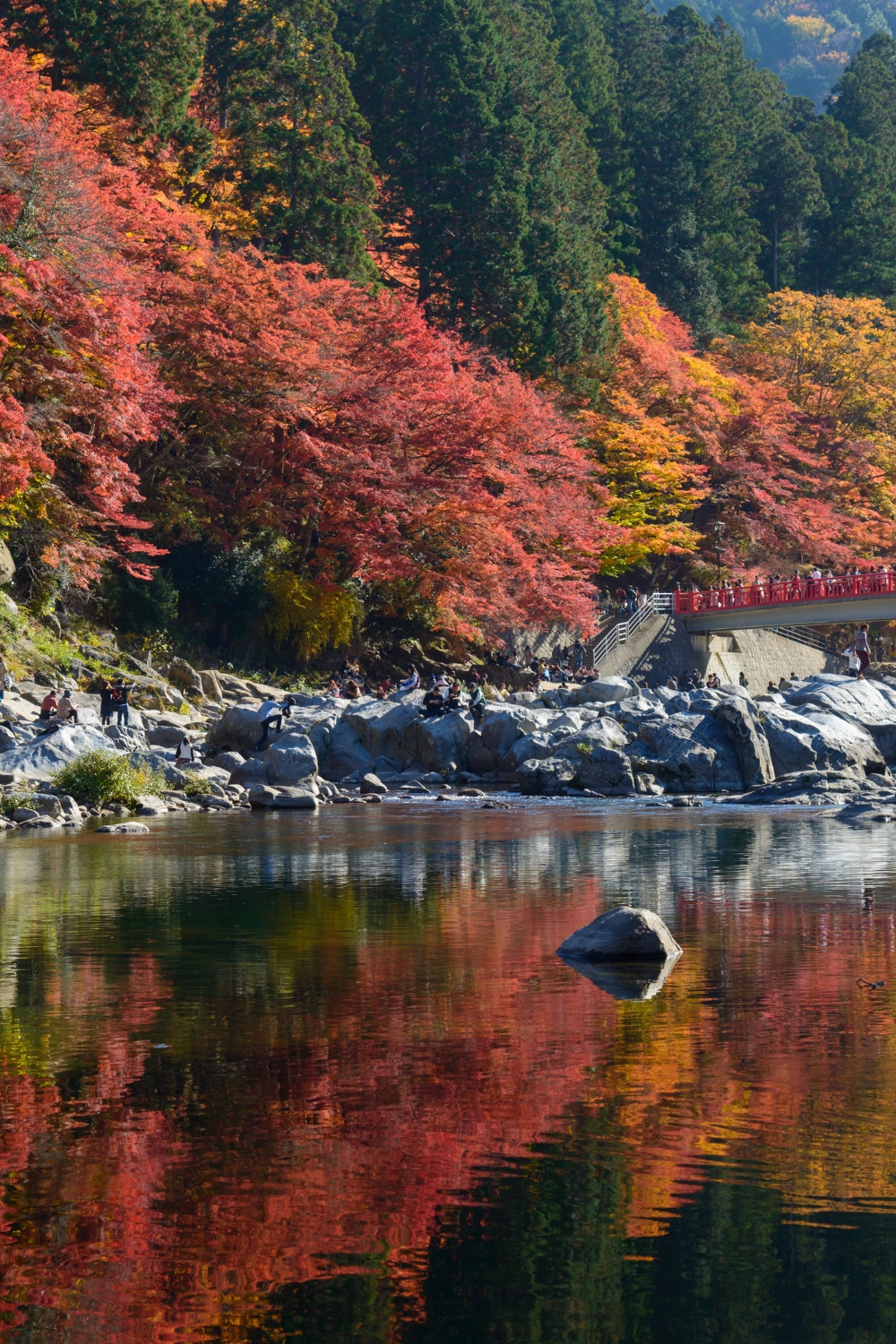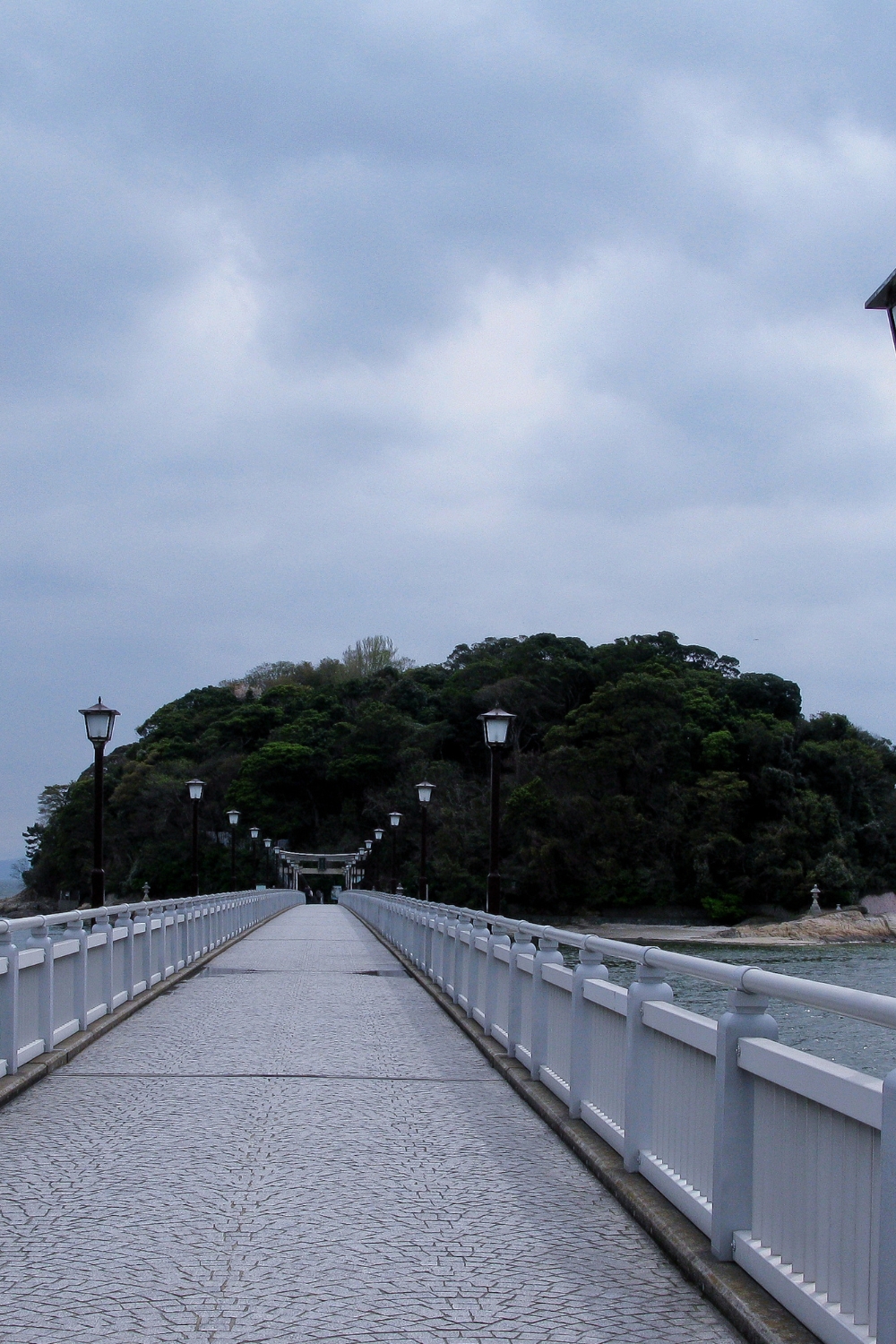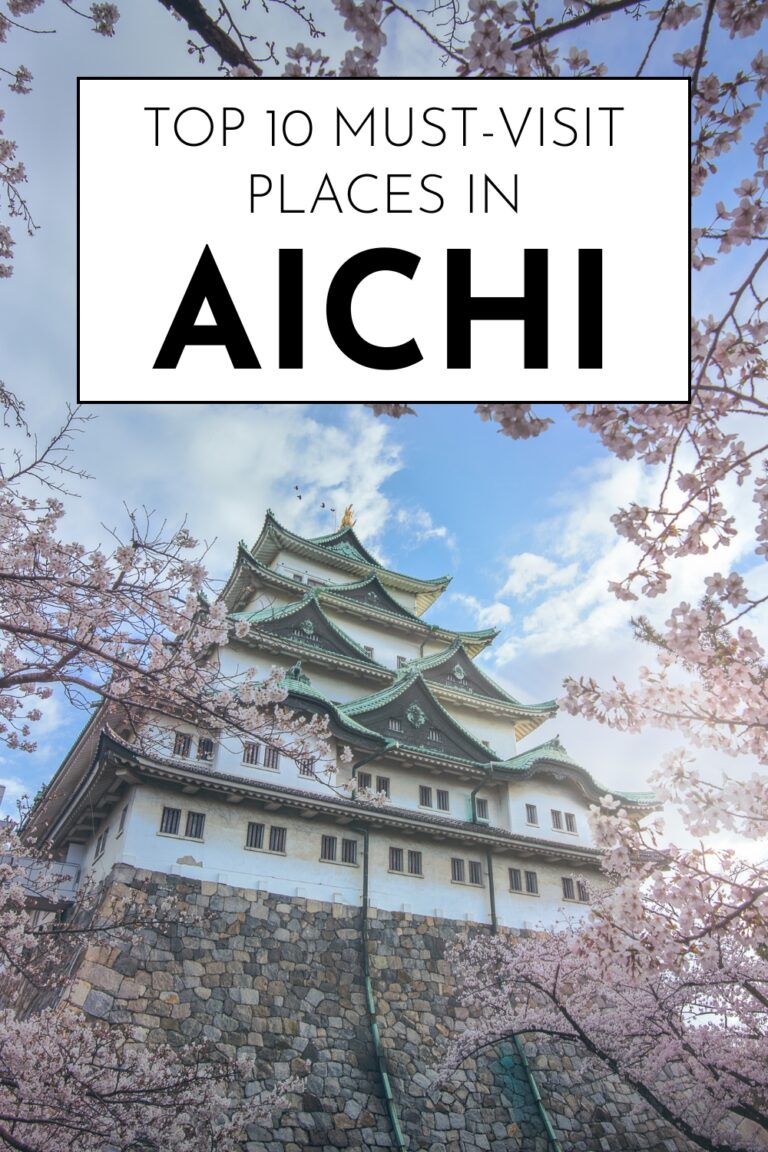Aichi Prefecture, located in the heart of Japan’s main island, offers an incredible blend of modern innovation and traditional Japanese culture. This dynamic region serves as home to Japan’s automotive industry while preserving centuries-old castles, temples, and cultural treasures.
Known as the birthplace of Toyota and packed with historical significance, Aichi Prefecture provides visitors with unique experiences ranging from cutting-edge technology museums to ancient samurai castles. The prefecture’s capital, Nagoya, ranks as Japan’s fourth-largest city and serves as a gateway to exploring this fascinating region.
From reconstructed feudal castles that showcase Japan’s warrior heritage to world-class museums celebrating automotive excellence, Aichi Prefecture delivers diverse attractions that appeal to history buffs, technology enthusiasts, and cultural explorers alike.
Let’s discover the ten most remarkable destinations that make Aichi Prefecture an essential stop on any Japanese adventure.
1. Nagoya Castle – Iconic Golden Dolphin Palace

Nagoya Castle stands as one of Japan’s most magnificent reconstructed castles, famous for its golden shachihoko (dolphin-shaped roof ornaments) that glitter in the sunlight. This impressive fortress represents the power and wealth of the Tokugawa shogunate during Japan’s Edo period.
Historical Significance and Architecture
Built in 1612 by Tokugawa Ieyasu, Nagoya Castle served as the residence of the powerful Owari branch of the Tokugawa family. The castle’s distinctive architecture features multiple defensive layers, massive stone foundations, and the iconic golden dolphins that have become symbols of Nagoya city.
The castle’s main keep rises five stories above ground with additional basement levels, creating an imposing structure that dominated the surrounding landscape. Traditional Japanese carpentry techniques used in its construction demonstrate the sophisticated building methods of the early 17th century.
Modern Reconstruction and Cultural Exhibitions
After World War II destruction, the castle was rebuilt using modern materials while maintaining its historical appearance. Inside, visitors find extensive exhibitions showcasing samurai armor, traditional crafts, and the daily life of feudal lords.
The castle grounds include beautiful gardens that transform with each season, particularly stunning during cherry blossom season in spring. Interactive displays and digital reconstructions help visitors understand the castle’s original layout and defensive systems.
Best time to visit: Spring (cherry blossoms) or autumn (fall colors)
Key highlights: Golden dolphins, samurai exhibitions, traditional gardens
Entry fee: 500 yen for adults
Access: 5-minute walk from Shiyakusho Station
2. Toyota Commemorative Museum of Industry and Technology
This fascinating museum tells the story of Toyota’s evolution from a textile machinery company to the world’s largest automaker. Located in Toyota’s original textile factory buildings, the museum showcases Japan’s industrial development and technological innovation.
Textile Heritage and Industrial Evolution
The museum’s first section demonstrates Toyota’s origins in textile manufacturing, featuring working looms and machinery that show how the company developed its famous production methods. Interactive displays explain the Toyota Production System principles that revolutionized manufacturing worldwide.
Visitors can observe demonstrations of traditional textile production alongside modern automated systems. The contrast illustrates Japan’s rapid industrial transformation and Toyota’s role in developing efficient manufacturing processes.
Automotive Innovation and Future Technology
The automotive section features historic Toyota vehicles, engine displays, and interactive exhibits explaining car manufacturing processes. Full-scale production line models show how vehicles are assembled using Toyota’s lean manufacturing principles.
Robot demonstrations and future mobility concepts provide glimpses into automotive technology’s direction. The museum successfully bridges past and future, showing how traditional craftsmanship evolved into modern industrial excellence.
Operating hours: 9:30 AM – 5:00 PM (closed Mondays)
Entry fee: 500 yen for adults
Special features: Working machinery demonstrations, robot shows
Location: Central Nagoya, near Sakae Station
3. Atsuta Shrine – Ancient Shinto Sacred Site

Atsuta Shrine ranks among Japan’s most important Shinto shrines, housing the sacred Kusanagi sword, one of the three Imperial Regalia of Japan. This ancient spiritual site has served as a place of worship for over 1,900 years.
Sacred Treasures and Spiritual Significance
The shrine’s most precious treasure, the Kusanagi sword, is never displayed publicly but represents one of Japan’s most sacred objects. According to Shinto mythology, this legendary sword was discovered in the tail of an eight-headed serpent slain by the storm god Susanoo.
The shrine grounds encompass ancient forests within urban Nagoya, creating a peaceful sanctuary that feels worlds away from the bustling city. Over 4,400 national treasures and important cultural properties are housed within the shrine complex.
Traditional Architecture and Forest Sanctuary
The shrine buildings showcase traditional Shinto architecture with their distinctive cypress bark roofs and vermillion-painted structures. The approach path leads through towering ancient trees that have stood for centuries, creating a mystical atmosphere.
Daily rituals and seasonal festivals maintain centuries-old traditions. The shrine’s spiritual atmosphere attracts millions of visitors annually, including many who come to pray for success in business and personal endeavors.
Historical significance: Over 1,900 years old
Sacred treasures: Kusanagi sword (one of three Imperial Regalia)
Best time to visit: Early morning for peaceful atmosphere
Special events: New Year celebrations, seasonal festivals
4. Meiji-mura Museum – Open-Air Historical Architecture Park
Meiji-mura preserves over 60 historical buildings from Japan’s Meiji period (1868-1912), when the country rapidly modernized and opened to the Western world. This expansive outdoor museum showcases the architectural fusion of Japanese and Western influences.
Architectural Heritage and Cultural Preservation
The museum relocates and reconstructs significant Meiji-era buildings that would otherwise be lost to urban development. Structures include everything from schools and post offices to churches and residential buildings, demonstrating how Japan adapted foreign architectural styles.
Walking through the museum feels like traveling back in time to experience Japan’s transformation from feudal society to modern nation. Each building tells stories of cultural exchange and adaptation during this pivotal period.
Interactive Historical Experiences
Historic steam trains and vintage streetcars provide transportation around the expansive grounds while offering authentic period experiences. Period-dressed guides and interactive exhibits bring the Meiji era to life for visitors.
The museum regularly hosts cultural events, traditional craft demonstrations, and seasonal festivals that recreate Meiji-period atmospheres. These activities provide deeper understanding of how Japanese people lived during this transformative era.
Area: 100 hectares with over 60 buildings
Transportation: Historic steam trains and streetcars
Activities: Period costume experiences, craft demonstrations
Location: Inuyama City, about 1 hour from Nagoya
5. Korankei Gorge – Autumn Foliage Spectacular

Korankei Gorge in Toyota City ranks among Japan’s most spectacular autumn destinations, featuring over 4,000 maple trees that create a breathtaking tunnel of red and gold colors. This natural wonder attracts visitors from across Japan during peak foliage season.
Natural Beauty and Seasonal Transformation
The gorge’s maple trees were planted over 600 years ago by Buddhist monks from nearby Kojiji Temple. These ancient trees now create one of Japan’s most photographed autumn landscapes, with colors typically peaking in mid to late November.
The Tomoe River flows through the gorge, creating scenic reflections of the colorful foliage. Walking paths along the riverbank provide multiple viewing angles and photography opportunities as the light changes throughout the day.
Cultural Sites and Traditional Atmosphere
Kojiji Temple, nestled within the gorge, adds cultural significance to the natural beauty. The temple’s traditional architecture complements the autumn colors, creating quintessentially Japanese scenic views.
Traditional tea houses and local restaurants serve seasonal specialties while providing rest stops for visitors exploring the gorge. Evening illuminations during peak season extend viewing hours and create magical nighttime atmospheres.
Best viewing period: Mid-November to early December
Peak colors: Usually around November 20th
Special features: Evening illuminations, traditional tea houses
Access: 1 hour from Nagoya by train and bus
6. Laguna Ten Bosch – Coastal Resort Entertainment
Laguna Ten Bosch offers a comprehensive resort experience combining theme park attractions, hot springs, shopping, and beachfront activities. This coastal destination provides family-friendly entertainment with beautiful ocean views.
Theme Park Adventures and Water Activities
The resort’s main theme park features roller coasters, water rides, and seasonal attractions that appeal to all ages. The park’s coastal location provides ocean breezes and scenic views that distinguish it from inland theme parks.
Water park facilities include pools, slides, and beach access during summer months. The combination of manufactured attractions and natural beach environments creates diverse recreational opportunities.
Luxury Accommodations and Wellness Facilities
Resort hotels offer ocean-view accommodations with traditional Japanese hospitality. Hot spring baths utilize natural thermal waters while providing relaxing experiences after active days at the theme park.
Shopping areas feature local specialties, international brands, and dining options ranging from casual to upscale. The resort’s comprehensive facilities allow multi-day visits without leaving the property.
Main attractions: Theme park, water park, hot springs
Accommodation: Multiple resort hotels
Location: Gamagori City, coastal Aichi Prefecture
Best for: Families, couples seeking resort experiences
7. Osu Shopping District – Traditional Meets Modern

Osu district in central Nagoya perfectly represents Japan’s ability to blend traditional culture with modern trends. This vibrant neighborhood surrounds the historic Osu Kannon Temple while offering eclectic shopping, dining, and entertainment options.
Shopping Diversity and Cultural Mix
The district’s covered shopping arcades contain everything from vintage clothing and electronics to traditional crafts and anime merchandise. This diversity reflects Japan’s cultural layers, where centuries-old traditions coexist with cutting-edge trends.
Street performers, small cafes, and specialty shops create a bohemian atmosphere that attracts young people, tourists, and locals alike. The area’s compact size makes it perfect for walking exploration and spontaneous discoveries.
Temple Heritage and Modern Entertainment
Osu Kannon Temple, built in 1612, serves as the district’s spiritual center. The temple’s monthly flea markets attract bargain hunters and antique enthusiasts, creating lively community gatherings.
The contrast between the ancient temple and surrounding modern shops illustrates Japan’s cultural continuity. Visitors can experience traditional temple worship and contemporary shopping within the same neighborhood.
Key attractions: Osu Kannon Temple, covered shopping arcades
Specialties: Vintage items, electronics, traditional crafts
Events: Monthly temple flea markets
Access: Osu Kannon Station, central Nagoya
8. Inuyama Castle – Japan’s Oldest Original Castle
Inuyama Castle holds the distinction of being Japan’s oldest surviving original castle, with its main keep dating back to 1537. This compact hilltop fortress offers intimate glimpses into authentic samurai architecture and defensive strategies.
Authentic Castle Architecture and History
Unlike many reconstructed castles, Inuyama Castle retains its original wooden structure and traditional construction methods. The castle’s steep wooden stairs, low doorways, and narrow windows demonstrate defensive features designed to confuse and slow attacking enemies.
The castle’s position on a hill overlooking the Kiso River provided strategic advantages for monitoring river traffic and defending against invasions. Its relatively small size reflects the practical needs of a regional lord rather than a major feudal power.
Scenic Views and Cultural Significance
The castle’s top floor offers panoramic views of the surrounding countryside, including the Japanese Alps on clear days. These vistas help visitors understand the castle’s strategic importance and the natural beauty of the region.
As a National Treasure, the castle represents one of only five original castles remaining in Japan. Its preservation allows visitors to experience authentic samurai architecture without modern reconstructions or interpretations.
Built: 1537 (oldest original castle in Japan)
Status: National Treasure
Views: Kiso River, Japanese Alps
Access: 15-minute walk from Inuyama-yuen Station
9. Tokugawa Art Museum – Samurai Cultural Treasures
The Tokugawa Art Museum houses one of Japan’s finest collections of samurai artifacts, including items owned by the Tokugawa shoguns who ruled Japan for over 250 years. This museum provides deep insights into elite Japanese culture and craftsmanship.
Shogun Treasures and Elite Artifacts
The museum’s collection includes sword masterpieces, elaborate armor sets, and exquisite textiles that belonged to the most powerful families in Japanese history. These artifacts demonstrate the highest levels of traditional Japanese craftsmanship.
Seasonal exhibitions rotate items from the extensive collection, ensuring multiple visits reveal new treasures. The museum’s scholarly approach provides detailed information about each artifact’s historical significance and artistic value.
Traditional Gardens and Cultural Context
The museum grounds include traditional Japanese gardens that complement the indoor exhibitions. These landscapes, designed according to classical principles, provide peaceful settings for contemplating the cultural heritage displayed inside.
The integration of art, history, and landscape design creates comprehensive cultural experiences. Visitors gain understanding not just of individual artifacts but of the cultural contexts that produced them.
Collection highlights: Tokugawa family treasures, samurai swords, traditional armor
Gardens: Traditional Japanese landscape design
Exhibitions: Rotating seasonal displays
Location: Eastern Nagoya, near Tokugawaen gardens
10. Takeshima Island – Scenic Island Shrine

Takeshima Island, connected to the mainland by a 387-meter bridge, offers a unique combination of natural beauty and spiritual significance. This small island in Gamagori Bay houses several shrines and provides panoramic coastal views.
Natural Beauty and Spiritual Significance
The island’s subtropical vegetation creates a lush environment that contrasts with the surrounding coastal landscape. Over 238 plant species thrive on the island, including rare varieties that don’t grow elsewhere in the region.
Multiple shrines dedicated to different deities dot the island’s paths, creating a spiritual walking experience. The main shrine, dedicated to the goddess of entertainment and good fortune, attracts visitors seeking blessings for success and happiness.
Romantic Destination and Scenic Views
The bridge approach and island setting create romantic atmospheres that attract couples and wedding photographers. Sunset views from the island rank among the most beautiful in Aichi Prefecture.
The island’s compact size allows complete exploration in 1-2 hours, making it perfect for half-day excursions. The combination of natural beauty, spiritual significance, and romantic setting appeals to diverse visitor interests.
Access: 387-meter bridge from Gamagori
Features: Subtropical vegetation, multiple shrines
Best time: Sunset for romantic views
Activities: Shrine visits, nature walks, photography
Planning Your Aichi Prefecture Adventure
Getting Around the Region
Nagoya serves as the perfect base for exploring Aichi Prefecture, with excellent train connections to all major attractions. The JR Tokaido Shinkansen connects Nagoya to Tokyo and Osaka, while local trains reach regional destinations efficiently.
Public transportation covers most attractions, though some locations like Korankei Gorge require bus connections. Rental cars provide flexibility for exploring multiple attractions in single days, particularly useful for reaching more remote natural sites.
Best Times to Visit Different Attractions
Spring (March-May): Perfect for castle visits with cherry blossoms, comfortable temperatures for outdoor exploration, and fewer crowds than peak summer season.
Summer (June-August): Ideal for coastal attractions like Laguna Ten Bosch, though hot and humid conditions make indoor attractions more comfortable during midday hours.
Autumn (September-November): Essential for Korankei Gorge foliage, excellent weather for all outdoor activities, and comfortable temperatures for extensive sightseeing.
Winter (December-February): Good for indoor attractions like museums and temples, fewer crowds, and clear mountain views on sunny days.
Cultural Considerations and Practical Tips
When visiting temples and shrines, dress modestly and follow local customs like bowing before entering sacred spaces. Photography is usually permitted in grounds but may be restricted inside buildings.
Many attractions offer English information, though learning basic Japanese phrases enhances interactions with locals. Cash remains essential as many smaller attractions and restaurants don’t accept credit cards.
Conclusion
Aichi Prefecture offers an extraordinary range of experiences that showcase Japan’s evolution from feudal society to modern industrial power. From ancient castles and sacred shrines to cutting-edge museums and scenic natural areas, the prefecture provides comprehensive insights into Japanese culture and history.
These ten destinations represent the diversity that makes Aichi Prefecture special – the ability to experience traditional Japan and modern innovation within the same region. Whether you’re interested in samurai history, automotive technology, spiritual traditions, or natural beauty, Aichi Prefecture delivers authentic and memorable experiences.
The prefecture’s excellent transportation connections and compact size make it possible to experience multiple attractions efficiently. Nagoya’s position as a major transportation hub means visitors can easily combine Aichi Prefecture exploration with visits to other Japanese destinations.
Start planning your Aichi Prefecture adventure today, and prepare to discover a region where Japan’s past and future converge in fascinating and unexpected ways. From golden castle dolphins to autumn maple tunnels, from ancient swords to modern robots, Aichi Prefecture offers unforgettable journeys through the heart of Japanese culture.
